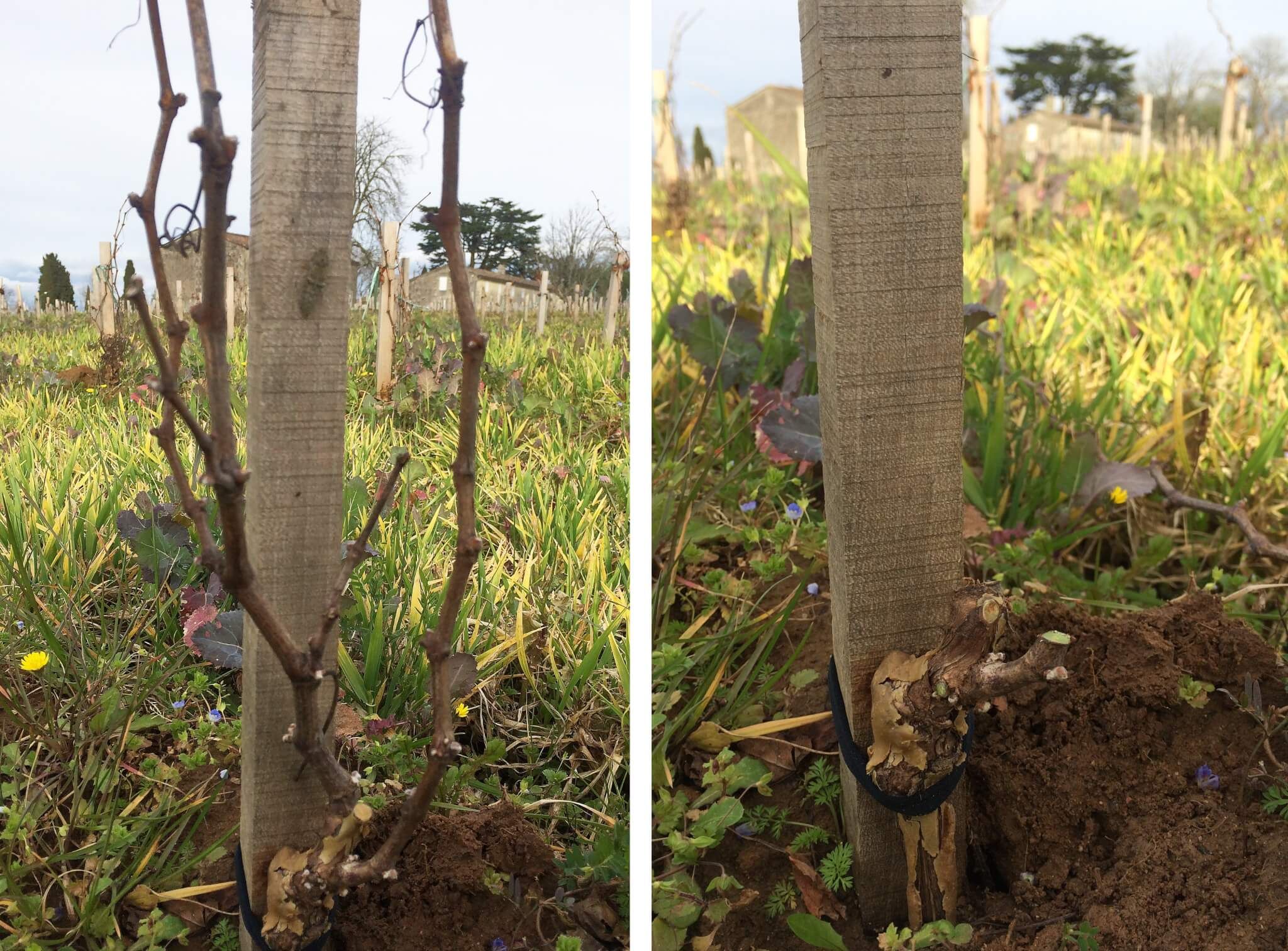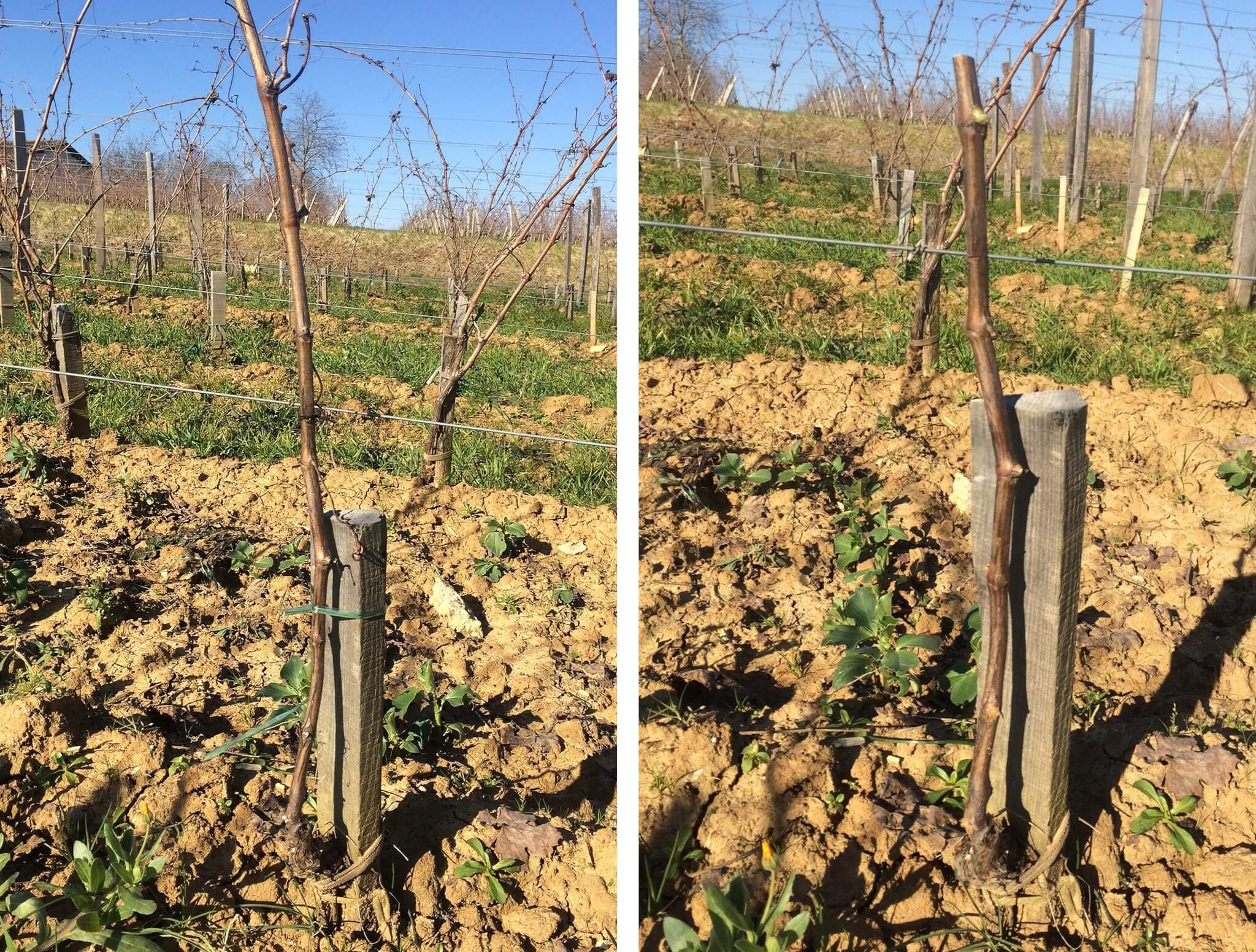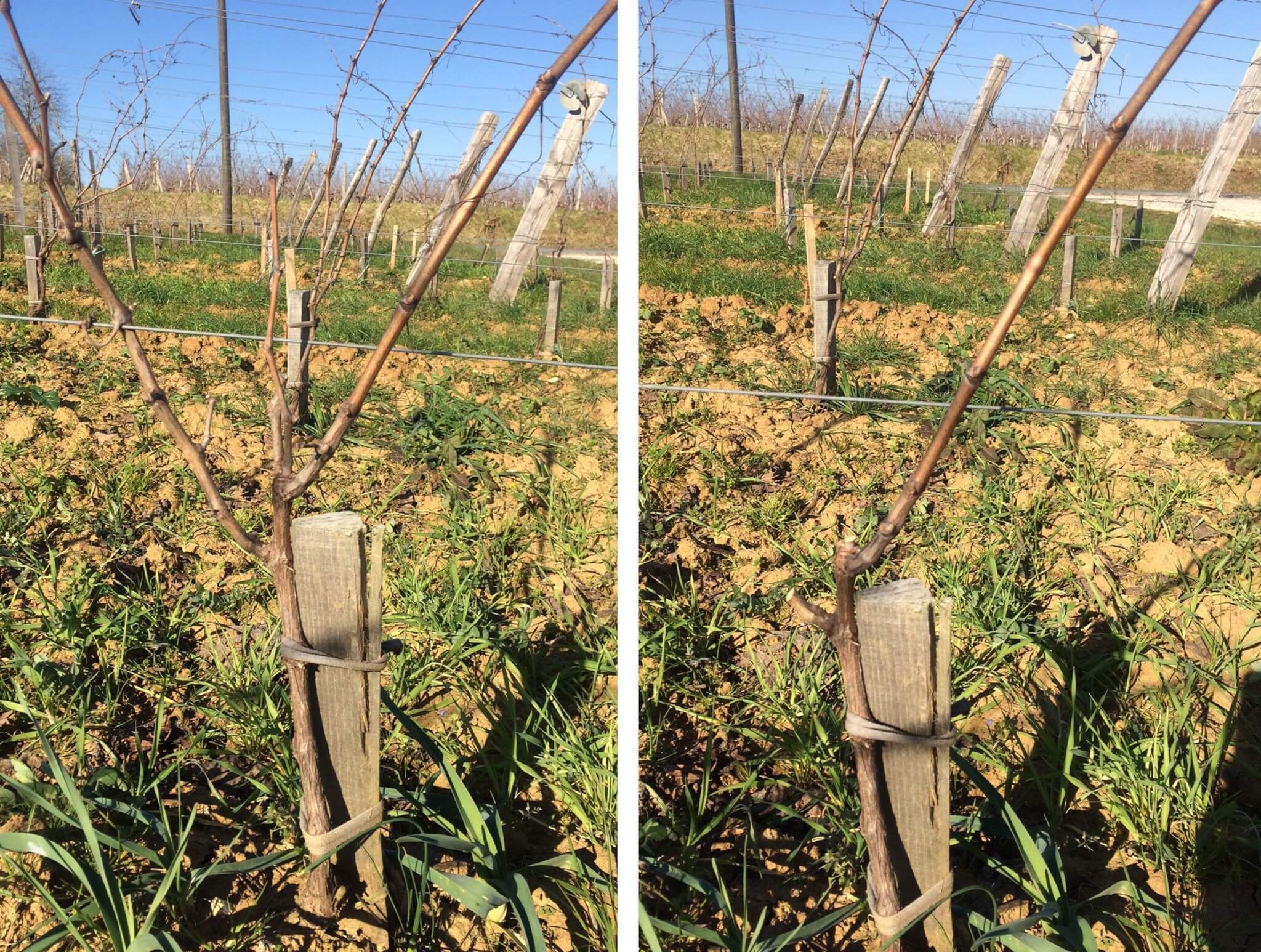The success of a vineyard starts with the very first pruning. During the first three years, the goal is not production, but the formation of a healthy, well-structured vine that will last. Proper training pruning helps slow down premature aging, prevent trunk diseases, and secure the plant’s future balance.
Understanding sap flow
Training pruning is based above all on an understanding of vine physiology. Two types of vessels carry sap:
- Xylem (raw sap): transports water and minerals from the roots to the aerial organs.
- Phloem (elaborated sap): carries sugars produced by the leaves to the rest of the plant.
These two networks are separated by the cambium, a thin layer of cells that produces wood (xylem) and phloem each year. Most of the vine’s nourishment occurs just a few millimeters under the bark. This is why poorly placed or premature pruning wounds can disrupt these vital flows for a long time.
First year: guiding without harming
In the year after planting, the priority is to let the vine establish itself without disturbing sap circulation.
Early manual disbudding, without pruning shears, helps reduce secondary shoots while preserving the integrity of the future trunk.
At the first pruning (done late, ideally after mid-March), the shoot best aligned with the main sap flow is selected. This is often opposite the grafting point and slightly more vigorous than the others.
A spur with two buds is usually kept. Cuts should be clean but not flush: leaving a small stub helps prevent the wound from interfering with the active sap flow zone.

Second year: selecting and orienting
The second year is key for building the trunk. It requires more structural intervention:
- Careful disbudding (more thorough than the year before), done early to avoid wounds
- Proper suckering to remove unwanted shoots
- Early tying to guide vertical growth and help the vine stand upright
The best-fed shoot is kept, ideally aligned with the sap flow. A simple guide: a diameter thicker than a cigarette allows for pruning into a “pointed” shape.
The number of buds left depends on vine vigor:
- Normal vigor: 3 buds kept
- Strong vigor: possibly more
It’s important to leave enough space under the training wire to avoid forming a trunk that is too tall.

Third year: setting the final structure
The third year is when the arms and final architecture of the vine are established.
Among the shoots located under the training wire, two are selected—well positioned, aligned with the row, neither too high nor too low.
- One is pruned as a spur with 2 buds
- The other as a cane with 3 or 4 buds
Another option is to prune longer canes, keeping only the first buds, then disbudding the following ones. This method allows better tying to the wire and makes it easier to form symmetrical arms.

Training a vine means planning ahead
Training the vine is never random. It requires a precise reading of the plant, an understanding of sap flow, and the ability to anticipate its future development.
Every decision taken during the first three years has a lasting impact on the vigor, lifespan, and balance of the vine. This is why this establishment phase deserves the grower’s full attention.
